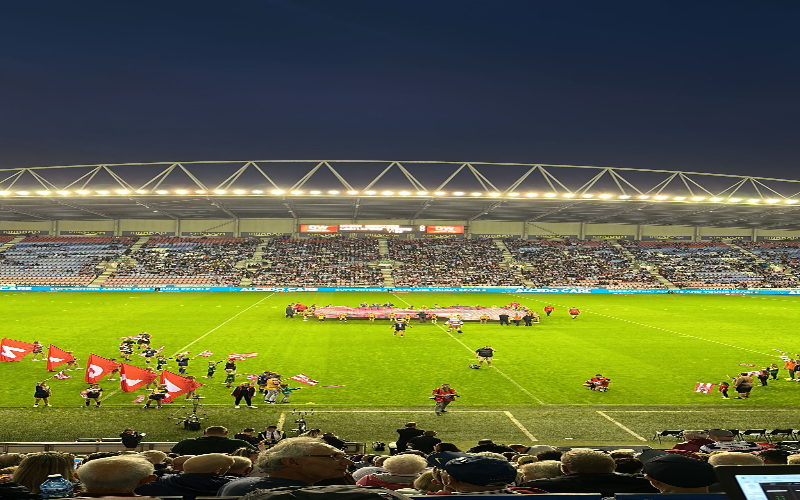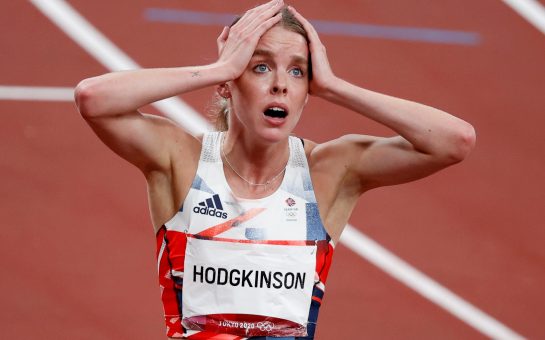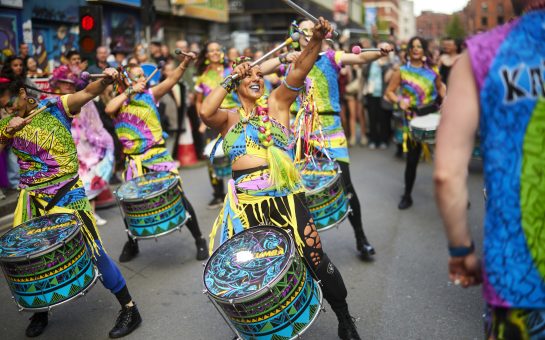All Super League clubs bar one in the 12-club competition have seen an increase in average attendance this season compared to in 2023, data shows.
That’s despite a broadcast deal introduced for the start of the 2024 season, which televised all six games played every week.
A third of the way through the regular season – with nine rounds played out of 27 — this looks set to be yet another bumper year for the sport’s highest tier, according to the clubs’ own figures on the games played so far. Some clubs have already recorded higher top attendances than in all of 2023.
Leeds Rhinos are leading the way with an average of 14,601 compared to 13,696 last year, closely followed by Wigan Warriors (14,289 compared to 13,497) and Warrington Wolves (13,190, an increase on 10,890 last year).
While these figures aren’t for the full season, it is a solid indication of what kinds of numbers we might continue to see over the remainder of the season.
Crunching the numbers
A total of 70 games of the regular, 27-week season were televised last year.
This year all 167 games of the regular season are televised, the majority on Sky Sports but some, for the first time in the professional era, free to view on the BBC.
While this new broadcast deal aims to bring in more viewers and raise the profile of the sport, there were concerns in some quarters that this would lead to a drop in numbers attending games in person.
One person who felt this concern was unwarranted is Steve Mascord, a hugely experienced Australian rugby league journalist based in London. He says: “I’m from Australia where every game’s been on TV since about 25 years ago, and it hasn’t had a detrimental effect at all, so I didn’t think it would here either. I think the game here is too reliant on pies and pints and visiting fans, so it was about time it entered the 21st century when it comes to the business model of professional sport, where TV pays the bills.
“It hasn’t had an impact, there’s been some great crowds, there’s been sell-outs, which I’m not used to seeing for regular season games in Super League. It only seems to be up.”
So far this season, all but one out of 11 clubs which have stayed in the Super League for both 2023 and 2024 has seen a higher average attendance at games compared to last year.
Hull FC, which has recorded an average of 12,088 so far in 2024 compared to 12,355 last year, was the only outlier. The club has also recorded poor results on the field, winning just one game, and is the only club to have sacked their coach so far.
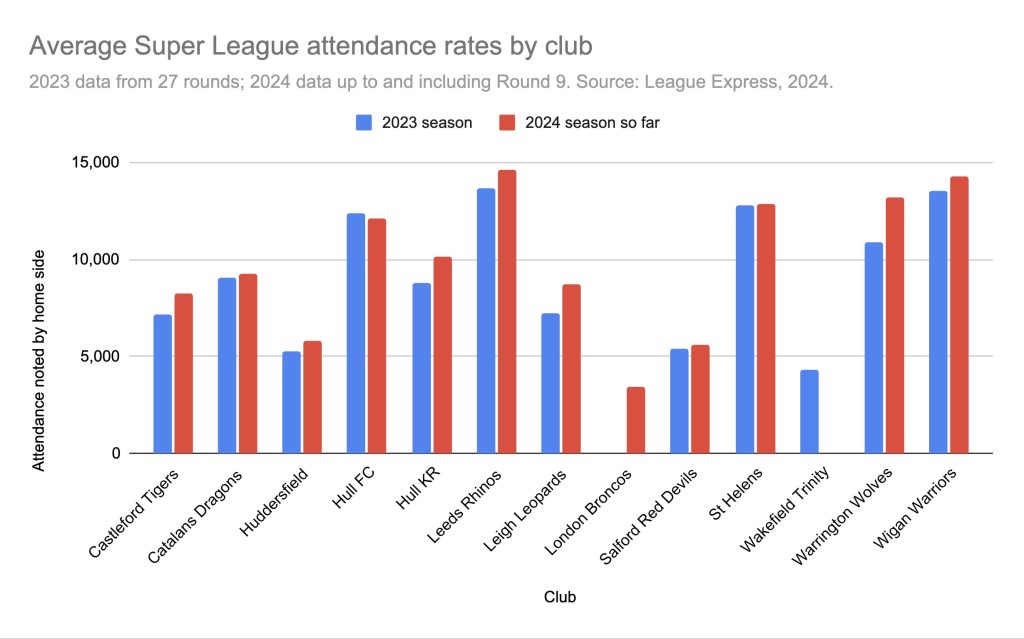
The season started strongly with 76,782 fans attending the opening six games, a 10% increase on last year, according to the Super League. Individual rounds vary – this year’s Rivals Round was significantly more poorly attended than in 2023, with 57,773 turning up compared to the record-breaking 83,357 noted last year.
But across all clubs the average up to and including gameweek 10 in 2024 was 9,578, an increase on 9,256 across all of 2023. That suggests the league is on track to meet or exceed the total figure of 1,545,894 recorded at the close of the 2023 competition.
Some clubs have already recorded better top attendances than last season: Castleford Tigers’ highest attendance in 2023 was 10,062, but the side has already beaten that in 2024, recording a turnout of 10,117 against Wigan Warriors in Round 1.
And in one of Super League’s most enduring rivalries, St Helens recorded a turnout of 17,980 for their home clash against Wigan Warriors in Round 6.
Total attendances for some clubs are already approaching the halfway mark of their tallies for last season, like Castleford Tigers. The West Yorkshire club have had 41,199 people through the turnstiles at just one-third of the way through season, a little under half of their combined total of 93,237 in 2023.
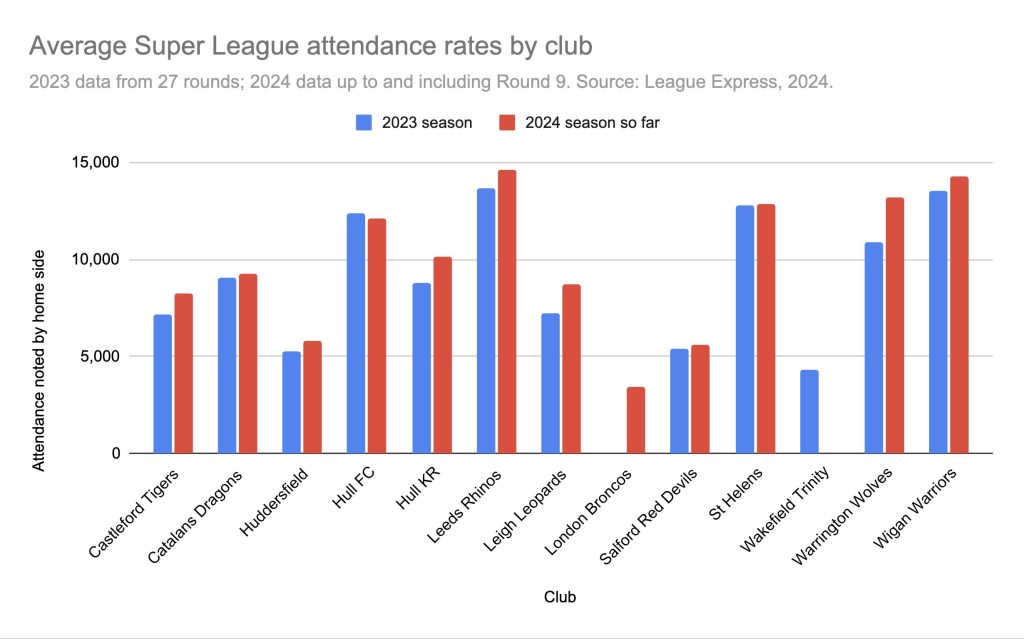
Mascord also believes the deal serves a different kind of fan than the typical match-goer. He says: “The people who watch on TV and the people who go [to matches] are different people: the people who like to wave a flag and chant, the people who like to sit with their mates and have a pint — they can’t do that in their lounge. There may be certain events, particularly when the weather is crap, where people are going to stay home. So certain matches involving certain teams in certain locations will be affected by being live on TV.
“But across the board, in my experience, the number of people it adds is greater than the number of people you lose. You make people aware of the overall narrative around the competition, you make people aware of who the stars are, and it’s free advertising for the overall experience – in the shots of the crowds everyone usually looks like they’re having a good time. So overall you gain a lot more than you lose.”
Figures for each full season normally feature discrepancies due to the competition’s format. The Super League season includes two ‘extra’ home matches each year which can distort crowd figures depending on opponents. Stadium capacity and average turnout varies across the league and with teams playing different opposition in this extra gameweek year-on-year, it’s difficult to compare seasons like-for-like.
As well as this, not all clubs publicise their attendances, with gaps occurring because neither the RFL nor Super League websites release specific data. Some clubs such as Hull KR only release them at certain points of the season.
But even missing some figures, the data still paints a picture of a league growing from strength to strength – and likely to break even more records by the season’s close.
Feature image credit: Ambi Nahal (used with permission). In-post graphs credit: Flo Clifford.
